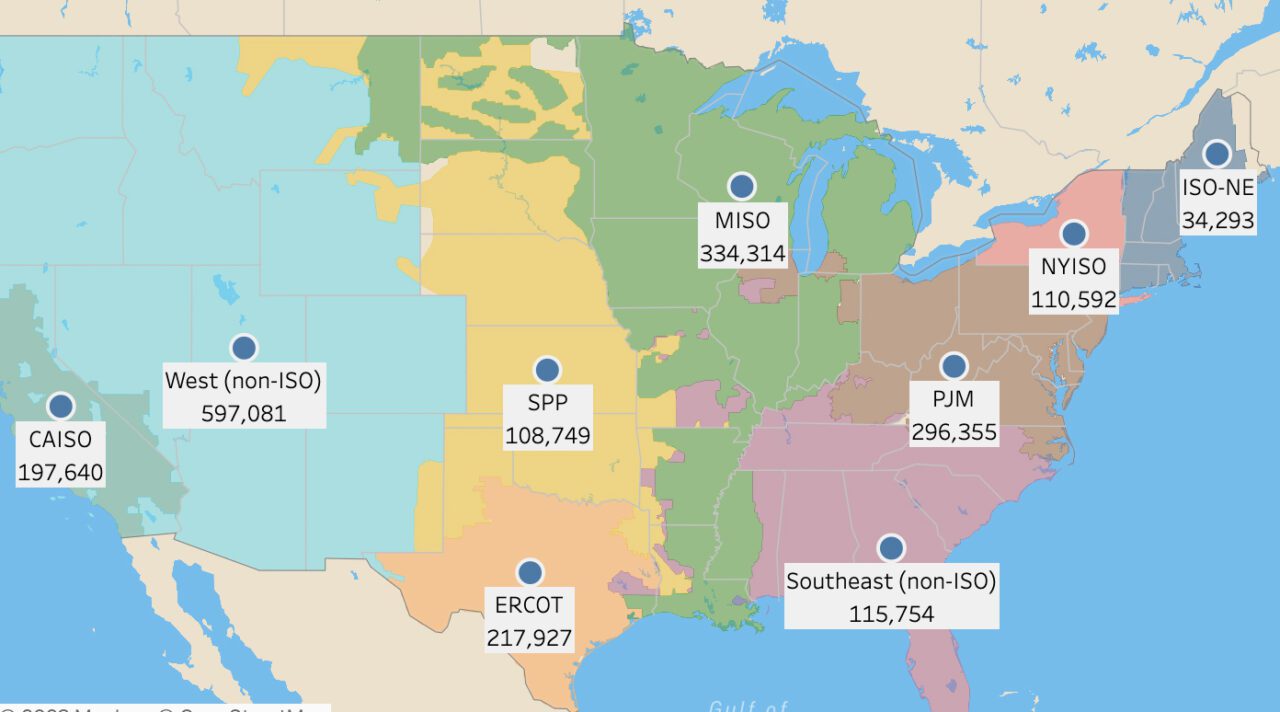The global energy landscape is undergoing a transformative shift driven by technological advancements, environmental concerns, and evolving regulatory frameworks. Central to this transformation is the development and integration of renewable energy sources like solar, wind, and hydroelectric power into existing grids. Understanding the age distribution of energy projects in interconnection queues across various states provides valuable insights into the dynamics of energy transition and infrastructure development.
Overview of Interconnection Queues:
Interconnection queues serve as a crucial mechanism for integrating new energy projects into the grid. They represent a pipeline of proposed projects seeking to connect to the transmission or distribution system. Projects in these queues range from large-scale utility installations to community solar initiatives and individual rooftop installations. The age distribution of projects in interconnection queues reflects the evolving landscape of energy generation and consumption within each state.
Analyzing State-Level Data:
To gain a comprehensive understanding of the age distribution of energy projects in interconnection queues, it is essential to analyze state-level data. Each state has its unique energy profile shaped by factors such as geography, climate, regulatory policies, and market dynamics. By examining interconnection queues state by state, we can identify trends, challenges, and opportunities specific to each region.
- California:
As a pioneer in renewable energy adoption and climate action, California’s interconnection queue offers valuable insights into the state’s energy transition. The age distribution of projects in California’s queue reflects the state’s long-standing commitment to renewable energy. With a significant proportion of projects in the queue being relatively new, California demonstrates ongoing investment and innovation in clean energy technologies.
- Texas:
Texas, known for its vast land area and abundant wind resources, has emerged as a leader in wind energy production. Analyzing the age distribution of projects in Texas’ interconnection queue highlights the state’s focus on wind power development. While there is a diverse mix of projects in the queue, including solar and storage, wind projects dominate, indicating Texas’ continued investment in harnessing its renewable energy potential.
- New York:
In contrast to Texas’ emphasis on wind power, New York’s interconnection queue reflects a more balanced approach to renewable energy development. With a growing focus on offshore wind projects, coupled with investments in solar and energy storage, New York aims to diversify its energy portfolio and achieve ambitious decarbonization goals. The age distribution of projects in New York’s queue underscores the state’s commitment to fostering a resilient and sustainable energy infrastructure.
- Florida:
Florida, known for its sunshine and coastal areas, presents a unique set of opportunities and challenges in renewable energy development. The age distribution of projects in Florida’s interconnection queue highlights the state’s untapped potential for solar energy deployment. Despite facing regulatory and logistical hurdles, solar projects continue to emerge in the queue, signaling a gradual shift towards cleaner and more resilient energy solutions.
- Midwest States (e.g., Illinois, Iowa, Minnesota):
The Midwest region boasts vast agricultural land and strong wind resources, making it an ideal location for wind energy projects. Analyzing the age distribution of projects in interconnection queues across states like Illinois, Iowa, and Minnesota reveals a significant presence of wind projects at various stages of development. Additionally, there is growing interest in solar and storage projects, reflecting the region’s evolving energy landscape.
Challenges and Opportunities:
While the age distribution of energy projects in interconnection queues provides valuable insights into the progress of renewable energy deployment, it also underscores several challenges and opportunities:
- Grid Integration: As the number of renewable energy projects in interconnection queues continues to grow, grid integration becomes increasingly complex. Addressing grid reliability, stability, and flexibility is essential to accommodate the variability of renewable energy sources and ensure seamless integration into the existing infrastructure.
- Regulatory Uncertainty: Regulatory policies play a critical role in shaping the development of energy projects and influencing investment decisions. Uncertainty surrounding policies related to incentives, permitting, and grid access can hinder the progress of renewable energy deployment and lead to project delays or cancellations.
- Technological Innovation: Continued advancements in renewable energy technologies, energy storage, and grid management systems are driving down costs and improving efficiency. Embracing innovation and fostering research and development initiatives are key to unlocking the full potential of clean energy resources and accelerating the transition towards a sustainable energy future.
- Equity and Inclusion: Ensuring equitable access to clean energy benefits and opportunities is essential for building a more inclusive energy transition. Community engagement, workforce development, and targeted policies can help address disparities and ensure that the benefits of renewable energy development are shared equitably among all stakeholders.
Conclusion:
Analyzing the age distribution of energy projects in interconnection queues provides valuable insights into the progress and dynamics of renewable energy deployment across different states. While each state faces unique challenges and opportunities, there is a shared commitment to accelerating the transition towards a cleaner, more resilient, and sustainable energy future. By addressing key challenges, fostering innovation, and promoting collaboration, states can unlock the full potential of renewable energy resources and pave the way for a brighter tomorrow.
